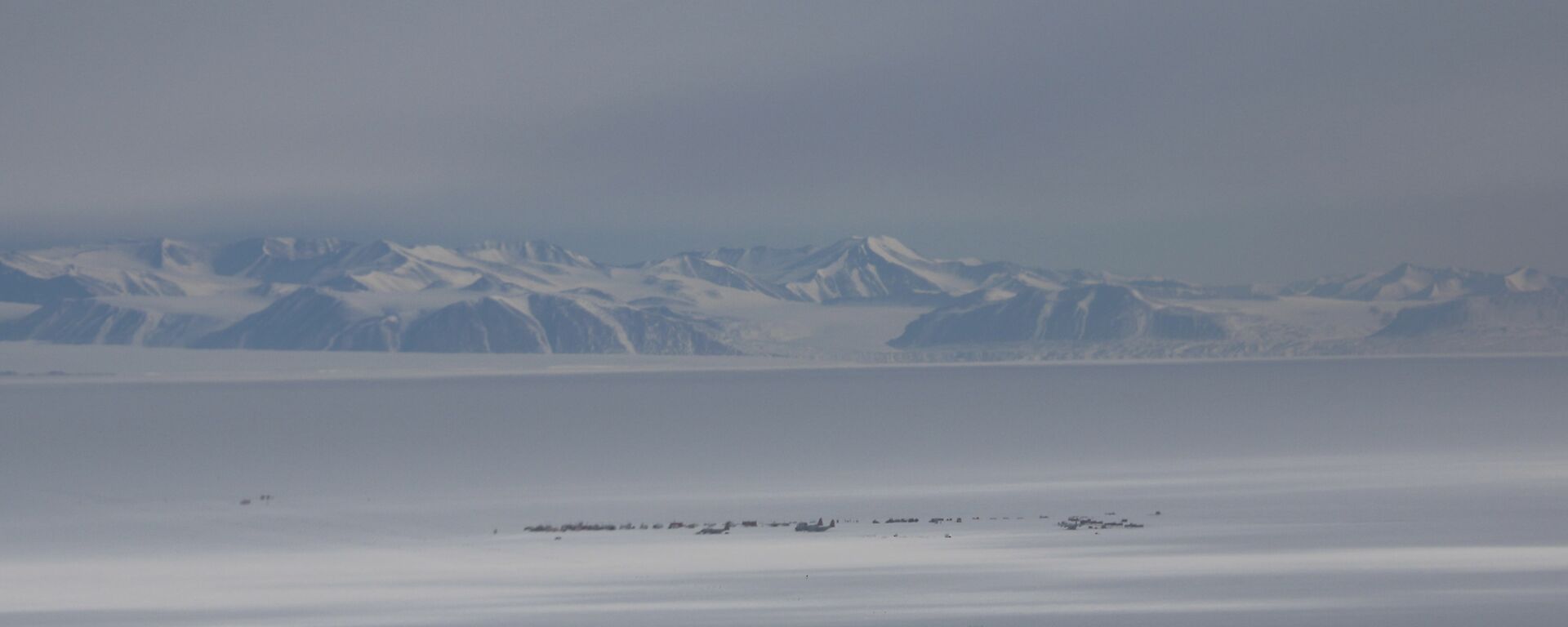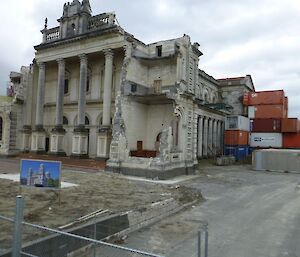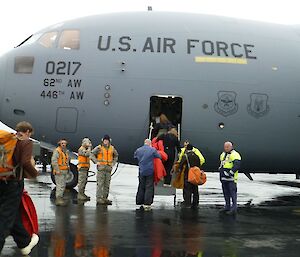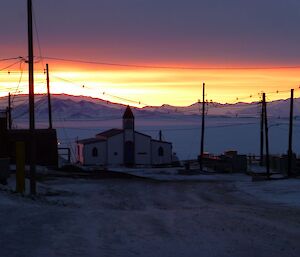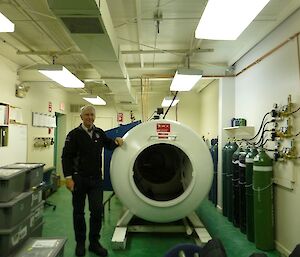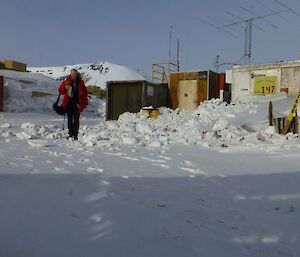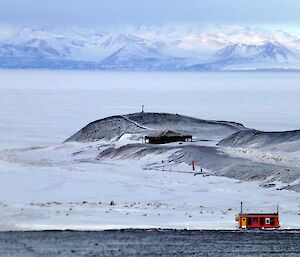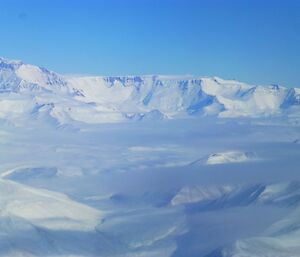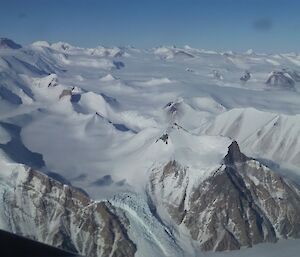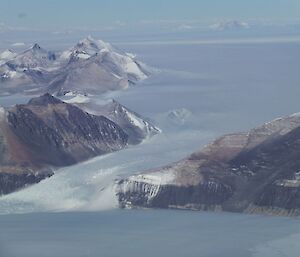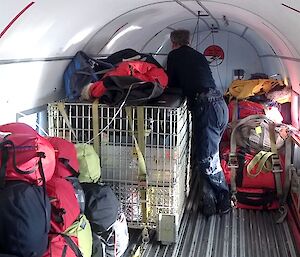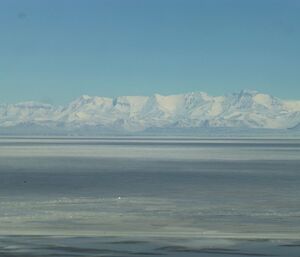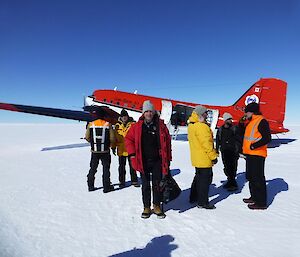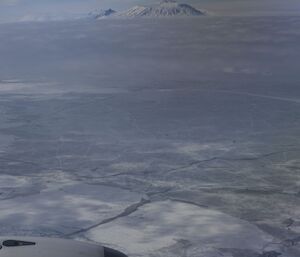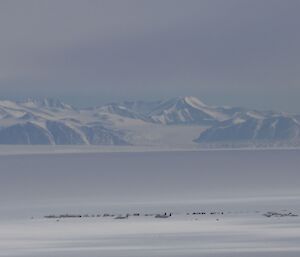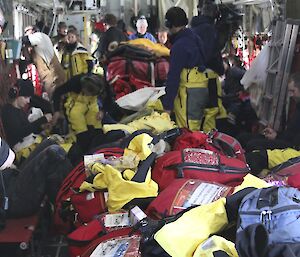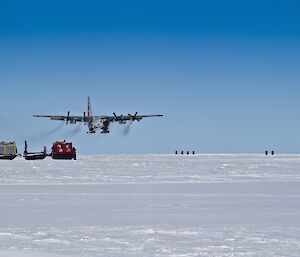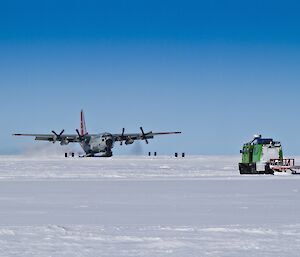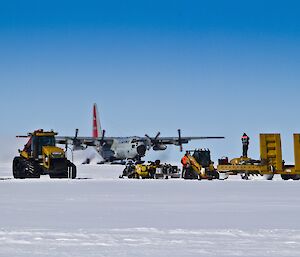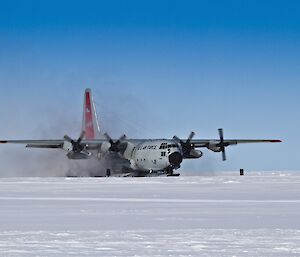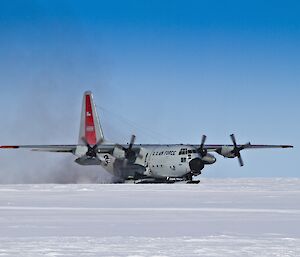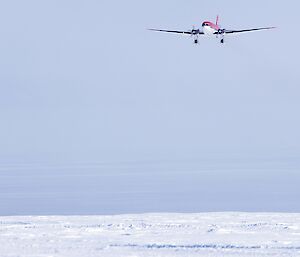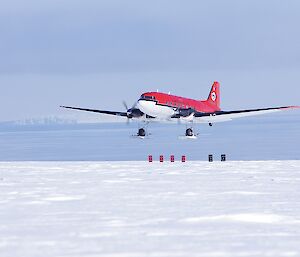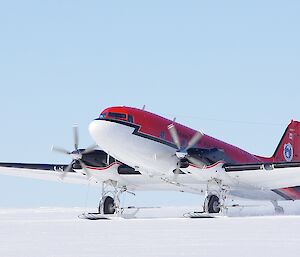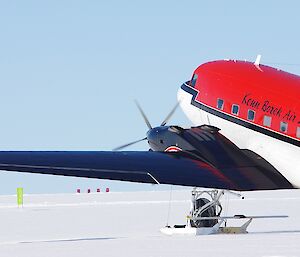I was elected for an early insertion, a curious Antarctic Division phrase to mean the first people arriving on station to join the winter team before the summer expeditioners arrive on the first possible flight. I was flying out to Wilkins with the ice airfield opening team; there were five of us on the Airbus A319 Flight Hobart to Christchurch which was bound for Christchurch anyway for U.S. programme charter. Weather delayed us in New Zealand by two days, so we had a chance to see the city, which is still racked by 2011 earthquake where the shocks still roll on.
My next is a flight was on a Globalmaster III Boeing C-17. This is a flying vaulted cathedral. We were strapped in sideways as you see in military films, amongst the United States resupply cargo, which included four helicopters.
The flight was smooth and not too noisy — you hardly felt it turn. There are no windows except a few high up which I suspect are for inspection purposes only.
McMurdo is big, up to 1200 people, but the United States programme does not think that it will ever need to be that busy, having a mere 900 in the summer and down to 150 in the winter. First established in 1956, McMurdo is in New Zealand territory and as part of the deal the US provide the Kiwis with their logistics and medical cover… they in walking distance over the hill. They share power and NZ windmills.
We were expecting to fly out the next day but I was hoping to stay for a couple of days for a tour. Providence heard us, and then forced us to stay a full fourteen days.
All at McMurdo share rooms, save for a lucky few (including one of the three doctors). As visitors we did not have desk or any place to go. I was lucky as I was given the amateur radio hut key so I had a desk, Internet and a warm hut. Internet is good and all have access, but not to the US Intranet, which means we missed out on some important news. There is TV with films and US Military TV. I visited the medical facility and if we had have known I would be staying for two weeks I would have been enrolled onto the emergency response team.
The US medical team does not have the remote training that AAD does… partly because they have more flights and they also have other support workers. Indeed there is no slushy duty on station as they have janitors employed, as is the professional fire crew.
We visited Scott’s 1903 Discovery Hut, and walked up Observation Hill to get a view of Mt Erebus, which still vents. It was climbed by Shackleton who on return wrote a poem about it, as one does! We visited the shop at Scott Base, the NZ station. The Kiwi station is faces where glacial ice meets sea ice so their view keeps changing.
Eventually we spied the Bassler arriving. Boarding her was a delight. You need the ear protectors all the time, and oxygen for much of the journey. The Transantarctic Mountains are a spectacular site as glaciers try and find a way through. The mountains block the three kilometres depth of ice across much of the continent. After the mountains the plane was still at over 3000 metres, yet it seemed a few hundred feet above the ice for many hours until eventually the ice fell away. The flight McMurdo to Casey by Bassler is seven hours long with is no loo. Bring your own bottle.
Casey is home, bright shiny and it seems so new. I am delighted to be here to meet the winter team again. The two weeks here has given me the idea of what winter working is like, before the summer crew arrived.

